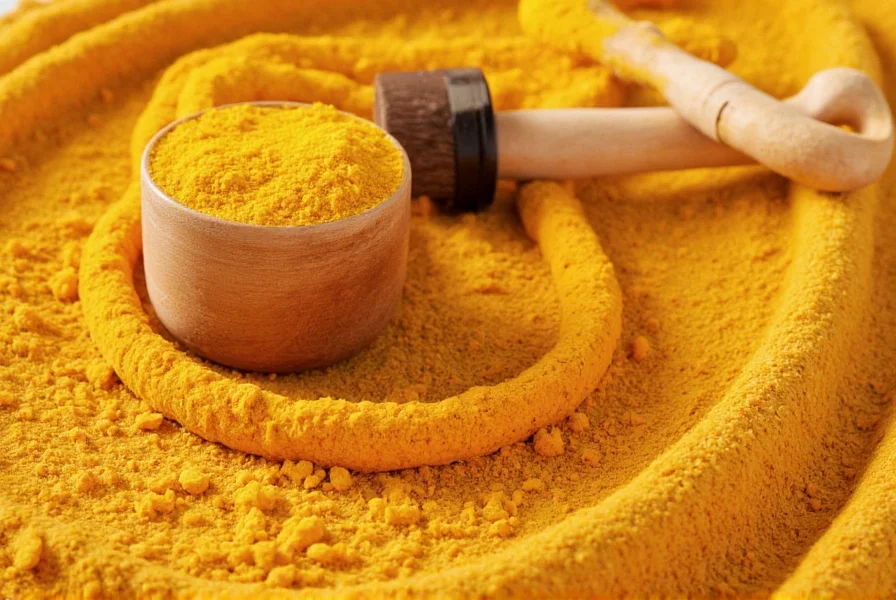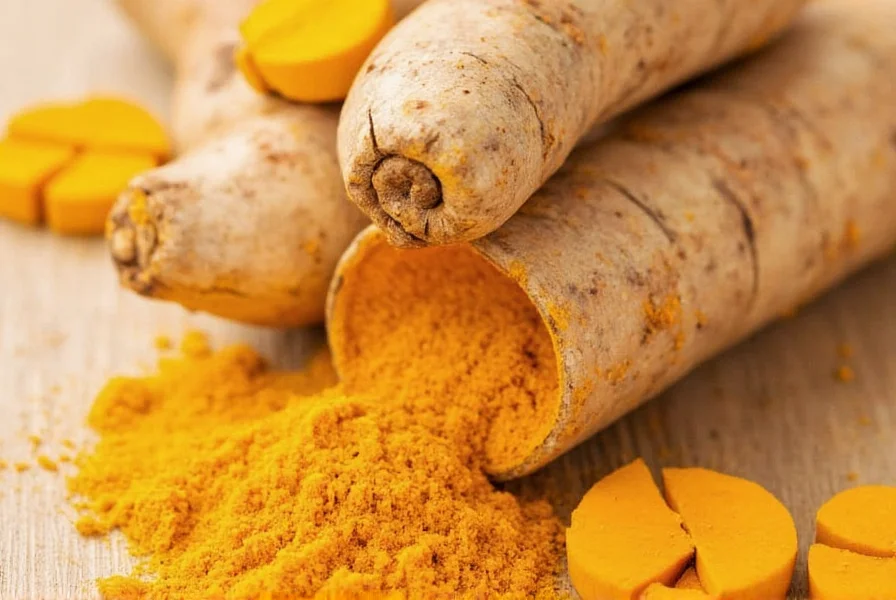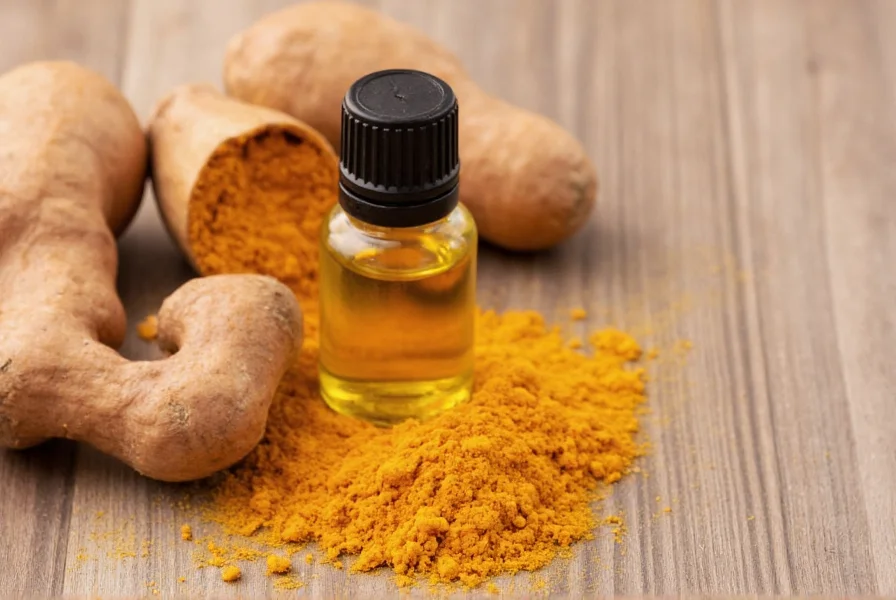Understanding Turmeric Essential Oil: Science and Application
Turmeric essential oil represents a distinct product from the more familiar turmeric powder or curcumin supplements. While many consumers conflate these forms, understanding their differences is crucial for safe and effective use. This comprehensive guide examines the scientific basis, practical applications, and safety considerations of turmeric essential oil based on current research.
What Exactly is Turmeric Essential Oil?
Turmeric essential oil is obtained through steam distillation of Curcuma longa rhizomes, capturing the plant's volatile aromatic compounds. This process yields a complex mixture containing primarily ar-turmerone (20-35%), alpha-turmerone, and beta-turmerone, along with other sesquiterpenoids. Crucially, curcumin—the compound responsible for turmeric's yellow color and most studied health benefits—is not present in significant amounts in the essential oil.
The extraction method matters significantly. High-quality turmeric essential oil requires careful temperature control during distillation to preserve delicate compounds. Lower quality products may use solvent extraction or improper distillation techniques that degrade beneficial components. When evaluating how to identify pure turmeric essential oil, look for GC/MS (gas chromatography/mass spectrometry) reports verifying composition.

Scientific Evidence Behind Turmeric Essential Oil Properties
Research on turmeric essential oil focuses primarily on its aromatic compounds rather than curcumin-related benefits. A 2021 review in Phytotherapy Research analyzed multiple studies showing:
| Compound | Concentration Range | Documented Properties |
|---|---|---|
| ar-Turmerone | 20-35% | Anti-inflammatory, neuroprotective potential |
| α-Turmerone | 10-20% | Antimicrobial, wound healing support |
| β-Turmerone | 5-15% | Antioxidant activity |
Unlike curcumin research, which has thousands of human studies, scientific evidence for turmeric essential oil benefits remains primarily in vitro and animal model stages. A notable 2017 study in Stem Cell Research & Therapy suggested ar-turmerone might stimulate neural stem cell proliferation, but human clinical trials are lacking.
Practical Applications and Safe Usage Guidelines
Understanding how to use turmeric essential oil safely is critical for effective application. The most evidence-supported uses include:
Aromatherapy Applications
Diffusing turmeric essential oil (1-2 drops per 100 sq ft) may provide mild anti-inflammatory effects through inhalation. Research in Journal of Ethnopharmacology suggests potential mood-supporting properties, though more human studies are needed. Unlike internal turmeric supplements, aromatherapy with turmeric oil avoids gastrointestinal concerns while potentially delivering some benefits.
Topical Application Protocol
For skin application, proper dilution is non-negotiable. Turmeric essential oil should be diluted to 1-2% concentration in carrier oil (5-10 drops per ounce of carrier oil). Higher concentrations risk skin irritation or staining. The recommended protocol:
- Perform patch test 24 hours before full application
- Mix with carrier oil (jojoba, fractionated coconut, or almond oil)
- Apply to clean skin with gentle massage
- Wash hands thoroughly after application
Proper dilution for turmeric essential oil prevents adverse reactions while maximizing potential benefits for skin health. Unlike turmeric powder, which can stain skin yellow, properly diluted essential oil typically doesn't cause discoloration.
Quality Considerations When Selecting Turmeric Oil
The market contains numerous products making exaggerated claims about turmeric essential oil for skin care benefits. To ensure quality:
- Verify botanical name: Curcuma longa (not "turmeric oil" without scientific name)
- Check for complete ingredient listing (should contain only turmeric oil)
- Look for batch-specific GC/MS reports from reputable suppliers
- Avoid products claiming "high curcumin content" (scientifically impossible)
Price can indicate quality—authentic turmeric essential oil requires approximately 200 pounds of rhizomes to produce one pound of oil, making extremely cheap products suspect. The characteristic warm, spicy-woody aroma should be present without chemical undertones.
Safety Profile and Important Precautions
While generally recognized as safe for topical and aromatic use at proper dilution, important precautions include:
- Pregnancy and breastfeeding: Avoid use due to insufficient safety data
- Medication interactions: May enhance effects of blood thinners
- Skin sensitivity: Always dilute; discontinue if irritation occurs
- Photosensitivity: Unlike some citrus oils, turmeric oil doesn't typically cause photosensitivity
Turmeric essential oil storage recommendations include keeping it in amber or cobalt glass bottles away from light and heat. Properly stored, it maintains stability for 1-2 years. Refrigeration can extend shelf life but may cause temporary cloudiness that clears at room temperature.

Addressing Common Misconceptions
Several widespread misunderstandings affect how people use turmeric essential oil:
- Misconception: Turmeric essential oil contains curcumin
Reality: Curcumin is non-volatile and doesn't transfer to essential oil - Misconception: More concentrated means better results
Reality: Over-concentration increases irritation risk without enhancing benefits - Misconception: All "turmeric oil" products are equal
Reality: Quality varies dramatically based on source material and extraction
Understanding the difference between turmeric oil and curcumin is fundamental. Curcumin requires black pepper extract (piperine) for absorption when taken internally, while turmeric essential oil works through different mechanisms primarily suited for external use.
Frequently Asked Questions
Can I ingest turmeric essential oil for health benefits?
No, turmeric essential oil is not intended for internal consumption. Unlike turmeric powder or standardized curcumin supplements, essential oils are highly concentrated and can cause serious adverse effects when ingested. For internal benefits, use culinary turmeric or clinically studied curcumin supplements instead.
How does turmeric essential oil differ from turmeric powder in skincare?
Turmeric powder contains curcumin which has documented skin benefits but can stain skin yellow. Turmeric essential oil contains different compounds (ar-turmerone) that don't typically stain, works at much lower concentrations (1-2% vs 5-10% for powder), and provides different mechanisms of action through aromatic compounds rather than curcumin's pathways.
What's the proper dilution ratio for sensitive skin?
For sensitive skin types, start with an extra-low dilution of 0.5% (3 drops per ounce of carrier oil). Perform a patch test behind the ear and wait 24 hours before broader application. If no reaction occurs, you may gradually increase to standard 1-2% dilution if desired. Always discontinue use if any redness, itching, or irritation develops.
Does turmeric essential oil help with inflammation?
Research shows turmeric essential oil's primary component ar-turmerone demonstrates anti-inflammatory properties in laboratory studies. However, evidence for topical application reducing human inflammation is limited compared to curcumin research. Any anti-inflammatory effects from topical use would be mild and localized, not systemic like properly formulated curcumin supplements.
How should I store turmeric essential oil to maintain potency?
Store turmeric essential oil in its original dark glass bottle with a tight-sealing cap, away from direct sunlight and heat sources. Ideal storage temperature is 60-75°F (15-24°C). Refrigeration can extend shelf life to 2 years but may cause temporary cloudiness. Always keep the bottle tightly closed when not in use to prevent oxidation, which degrades the oil's therapeutic properties.











 浙公网安备
33010002000092号
浙公网安备
33010002000092号 浙B2-20120091-4
浙B2-20120091-4